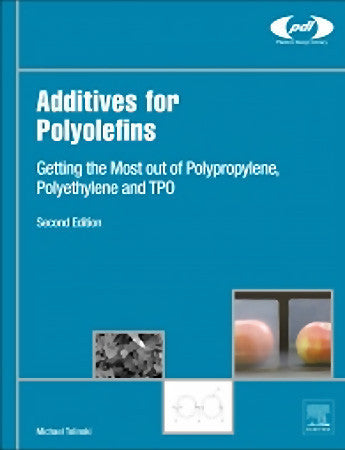Handbook of Polymer Blends and Composites, Volume 2
The extraordinary growth in the use of plastics in the last century is in response to a growing world population, with its increasing demands for more food, better health care, improved housing and numerous cheaper and abundant consumer products. What is expected of the chemical industry in the 21st century is to produce plastics while being aware of the environment, by reducing waste production, reducing the consumption of materials, reducing the demand for energy, reducing the use of non-renewable resources, and reducing risks, hazards and costs. The topics of this handbook try to answer these questions in a specific way by using simple rules of mixing. Polymer blending is a very useful and versatile strategy for the polymer chemist for designing new materials that potentially fulfill these new 'green' requirements.
This four volume handbook, Handbook of Polymer Blends and Composites is intended to provide an overview of the theory and application of polymer blends and composites. The first two volumes (of which this is the second) are concerned with the state-of-the-art of composites' development, characteristics of particulate fillers and fibre reinforcements and interface characteristics, main procedures of composites manufacture and their applications. The other two volumes are dedicated to polymer blends.
Practical and theoretical investigations are presented, which are aimed at generating an understanding of the fundamental nature of polymer mixtures and composites and describing progress in the thermodynamics of mixing (both in solution and solid state) of binary and multi-component systems.
This book will be useful to students, researchers, academics, and workers in the industry, who have an interest in polymer blends and composites.
This four volume handbook, Handbook of Polymer Blends and Composites is intended to provide an overview of the theory and application of polymer blends and composites. The first two volumes (of which this is the second) are concerned with the state-of-the-art of composites' development, characteristics of particulate fillers and fibre reinforcements and interface characteristics, main procedures of composites manufacture and their applications. The other two volumes are dedicated to polymer blends.
Practical and theoretical investigations are presented, which are aimed at generating an understanding of the fundamental nature of polymer mixtures and composites and describing progress in the thermodynamics of mixing (both in solution and solid state) of binary and multi-component systems.
This book will be useful to students, researchers, academics, and workers in the industry, who have an interest in polymer blends and composites.
1. An Overview of Composite Fabrication, Design and Cost
2. Liquid Moulding Processes
3. Use of Advanced Composite Materials in the Construction of Suspension Push-Rods for A Formula One Racing Car
4. Corrosion Resistance of Polymers, Polymer Blends, and Composites in Liquid Environments
5. New Approaches to Reduce Plastic Combustibility
6. Fibre Reinforced Plastic Composites for Biomedical Applications
7. Composite Materials in the Nuclear and Space Industries: Specific Applications
8. Advanced Composites for Offshore Developments
9. Functional Polymer Composites
10. Conducting Polymer Composites
11. Recycling of Automotive Composites
2. Liquid Moulding Processes
3. Use of Advanced Composite Materials in the Construction of Suspension Push-Rods for A Formula One Racing Car
4. Corrosion Resistance of Polymers, Polymer Blends, and Composites in Liquid Environments
5. New Approaches to Reduce Plastic Combustibility
6. Fibre Reinforced Plastic Composites for Biomedical Applications
7. Composite Materials in the Nuclear and Space Industries: Specific Applications
8. Advanced Composites for Offshore Developments
9. Functional Polymer Composites
10. Conducting Polymer Composites
11. Recycling of Automotive Composites
Anand Kumar Kulshreshtha joined the Ahmedabad Textile Industry's Research Association (ATIRA) as a Senior Scientific Officer in 1970, where he worked on the morphology and properties of natural fibres (cellulose). In 1975 he became a United Nations Fellow at the then Polytechnic Institute of New York with Professors E.M.Pearce and G.C.Tesoro. In 1978-1979 he worked as a postdoc at the University of Massachusetts, Amherst. From 1979-1980, he was an NRC Resident Research Associate at the Wright-Patterson Air Force Base, Ohio. Currently, he is Senior Manager (R&D) and Leader for Polymer and Information Groups at the Indian Petrochemicals Corporation Ltd., Vadodara. He is on the editorial board of the journal, 'Popular Plastics & Packaging' and author of about 200 research papers, articles and book chapters.
Cornelia Vasile is the senior researcher at the Romanian Academy, 'P.Poni' Institute of Macromolecular Chemistry, Iasi, Romania and Associate Professor at Laval University-Quebec Canada, 'Gh. Asachi' Technical University of Iasi and 'Al.I.Cuza' University of Iasi. She received her Ph.D. degree in the physical chemistry of macromolecules from 'Al.I.Cuza' University of Iasi, Romania. Cornelia is the author or co-author of seven books, 250 scientific articles, and 75 technical reports, as well as the holder of 38 patents. She is a member of the IUPAC, the Romanian Associations of Romanian Scientists and for Basic Research, the Commissions of the Romanian Academy for Thermal Analysis and Calorimetry, and of Environmental Protection.
Cornelia Vasile is the senior researcher at the Romanian Academy, 'P.Poni' Institute of Macromolecular Chemistry, Iasi, Romania and Associate Professor at Laval University-Quebec Canada, 'Gh. Asachi' Technical University of Iasi and 'Al.I.Cuza' University of Iasi. She received her Ph.D. degree in the physical chemistry of macromolecules from 'Al.I.Cuza' University of Iasi, Romania. Cornelia is the author or co-author of seven books, 250 scientific articles, and 75 technical reports, as well as the holder of 38 patents. She is a member of the IUPAC, the Romanian Associations of Romanian Scientists and for Basic Research, the Commissions of the Romanian Academy for Thermal Analysis and Calorimetry, and of Environmental Protection.




